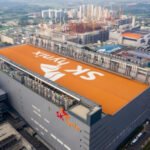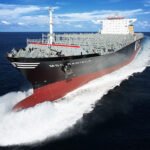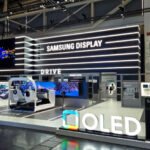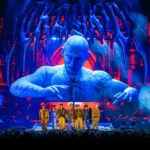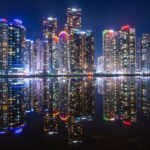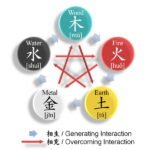
Donald Trump has approved South Korea’s long-sought plan to build nuclear-powered submarines, a move that could transform Korea’s naval capabilities and the future of its shipbuilding industry while strengthening strategic cooperation with Washington.
A day after the two allies reached a broad trade and tariff deal in the southern town of Gyeongju on the sidelines of the APEC leaders’ meeting, the US president said on Thursday that he is allowing South Korea to build nuclear-powered submarines in the US.
“I have given them approval to build a Nuclear Powered Submarine, rather than the old fashioned, and far less nimble, diesel powered Submarines that they have now,” Trump said on Truth Social.
In a separate post, he wrote: “South Korea will be building its Nuclear Powered Submarine in the Philadelphia Shipyards, right here in the good ol’ U.S.A.”
“Shipbuilding in our Country will soon be making a BIG COMEBACK,” he added.

On Wednesday, Lee asked Trump to “decide to allow us to receive fuel for nuclear-propelled submarines.”
Lee said: “We are not proposing to build submarines armed with nuclear weapons. We want you to allow us to secure nuclear fuel for nuclear-powered submarines. Diesel submarines have inferior submerged endurance, which limits our ability to track North Korean or Chinese submarines.”
The Korean president told Trump that if South Korea owned nuclear-powered submarines, it would reduce the operational burden on the US Navy in regional waters at a time when tensions with nuclear-armed North Korea remain high.

WORLD’S NO. 7 OPERATOR OF NUKE-POWERED SUBS
If all goes to plan, Seoul will construct nuclear-powered submarines at Hanwha Philly Shipyard Inc. in Philadelphia, owned by Hanwha Ocean Co., which would mark a dramatic policy shift that positions South Korea as the world’s seventh operator of nuclear-propelled submarines.
While the construction itself falls under South Korean sovereignty, the approval signals a de facto US commitment to providing key nuclear propulsion technology and enriched uranium fuel – areas that remain strictly controlled under the bilateral nuclear cooperation agreement.
Amending or supplementing that accord will be essential before Seoul can acquire reactor fuel for such submarines, which are designed to operate with low-enriched uranium rather than nuclear warheads.

The Trump administration’s move mirrors the AUKUS framework launched under former US President Joe Biden in 2021, under which the US and UK agreed to transfer nuclear-submarine technology to Australia.
Washington’s extension of a similar privilege to Seoul underscores its growing desire for South Korea to play a larger maritime role in countering China’s regional influence, analysts said.
Trump’s green light for Seoul’s nuclear-powered submarines comes on the same day that he had a bilateral summit with Chinese President Xi Jinping in Busan, southeast of Seoul.
Xi flew to Busan earlier on Thursday to meet with Trump and attend the APEC leaders’ meeting.
“This could be a game-changer,” said a defense expert in Seoul. “A Korean nuclear sub fleet would significantly enhance allied undersea surveillance and deterrence capabilities in the Indo-Pacific.”

Analysts said the decision, however, could face domestic resistance within the US government, where some officials have expressed concerns over nuclear non-proliferation risks and the precedent it might set for other allies.
HANWHA TO TAKE THE LEAD
Hanwha Ocean, formerly Daewoo Shipbuilding & Marine Engineering, has been leading the “Make American Shipbuilding Great Again” (MASGA) project – a Korea-proposed initiative to revive the US shipbuilding industry with minimal labor input through automation and AI.
Industry officials said Hanwha Ocean, which acquired the Philly shipyard last year, has been tapped to lead the program, given its extensive record in submarine construction and its existing US facilities.
Hanwha has built 17 of the 23 submarines delivered to the South Korean Navy and is the only domestic firm with export experience, having delivered three submarines to Indonesia.

Hanwha Ocean said in a statement on Thursday that it “fully supports the historic decision made by Presidents Lee and Trump” and is “ready to contribute with cutting-edge shipbuilding technologies.”
The nuclear-powered version is expected to debut in the Jang Bogo-IV class, which follows South Korea’s locally designed KSS-III diesel-electric submarines.
Each nuclear-powered unit could cost about 2.2 trillion won ($1.5 billion), making it one of the most valuable defense assets in the country’s portfolio.
The selection of Hanwha also highlights Seoul’s ambition to integrate its commercial shipbuilding prowess with high-end defense technology, potentially creating a new export niche.
Hanwha’s 330-meter Philadelphia yard, equipped with two dry docks, is capable of constructing nearly all classes of US Navy surface ships except aircraft carriers.

NEW HORIZON FOR KOREAN SHIPBUILDERS
The development may also benefit HD Hyundai Heavy Industries Co., another key player in the MASGA project and Korea’s largest shipbuilder.
Hanwha and HD Hyundai signed a “one team” partnership earlier this year to jointly pursue naval exports, with Hyundai focusing on surface ships and Hanwha on submarines.
The alliance recently had them included in the shortlist for Canada’s multi-billion-dollar submarine procurement project.
Analysts said nuclear submarine technology could be Korea’s next major industrial breakthrough, opening up new export opportunities in high-value defense and energy systems.

For now, much hinges on the technical details of nuclear fuel supply and US congressional approval.
But Trump’s swift decision, just a day after Seoul’s request, signals both a strategic realignment and a political flourish characteristic of his foreign policy style, analysts said.
In mid-October, China imposed sanctions on five US subsidiaries of Hanwha Ocean, accusing the shipbuilder of aiding Washington’s efforts to revive its shipbuilding industry – a move underscoring Korea’s squeezed position in the escalating US-China confrontation.
The five firms are Hanwha Shipping LLC, Hanwha Philly Shipyard, Hanwha Ocean USA International LLC, Hanwha Shipping Holdings LLC and HS USA Holdings Corp.
On Thursday, China, in response to Seoul’s move to build nuclear-powered submarines, said: “We hope South Korea and the US fulfill their non-proliferation obligations.”

